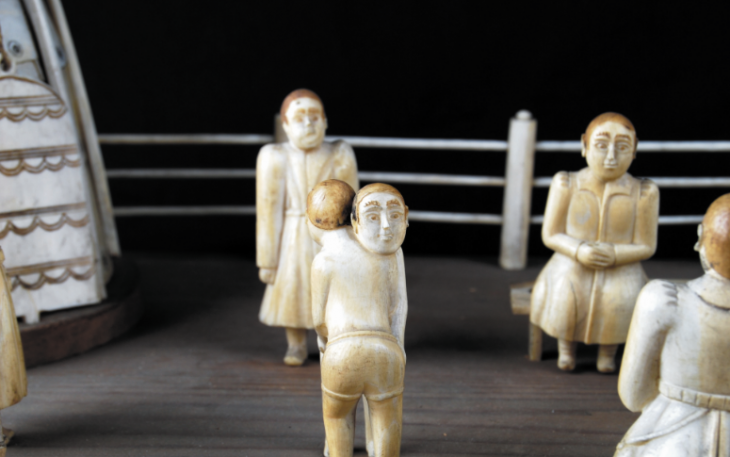What is it made from?
The model’s figures are made from mammoth ivory. Sakha (Yakutia) is a permafrost region; i.e., the ground under the topsoil is frozen all the year round. The ice preserves prehistoric animals, such as mammoths – and yet the permafrost is constantly shifting, as it melts and freezes with the seasons. The remains of frozen mammoths appear at intervals all over Sakha (Yakutia)’s vast territory. Sakha people have been carving implements and artefacts from mammoth ivory for centuries.
Who made it, and why?
We do not know exactly who made the model, when, or where. The British Museum’s records show that it was bought at the Universal Exhibition in Paris in August 1867, by Sir Augustus Wollaston Franks (1826 – 1897), Keeper of British and Medieval Antiquities and Ethnography at the museum. The Paris Exhibition catalogue describes the model as Yakut. It was brought to the Exhibition by a Sakha merchant called Gabriel Pavlov, along with other Sakha objects. The model can only have been carved by someone with a deep knowledge of Sakha culture – someone who could convey the ritual and its participants in detail. It seems likely therefore that a Sakha artisan made the model, during the middle of the nineteenth century.
That said, it is unlikely that the Sakha artisan regularly made such models for Sakha people. There would have been no place for such large, decorative objects in Sakha homes. The Sakha art of the time was functional, rather than representative. Sakha domestic objects and clothes were intricately decorated – but this decoration aimed to ward off evil spirits, and thus had an important role in maintaining a household’s health and harmony. Instead, the model was probably made to illustrate Sakha ways of life to foreign outsiders. Models of striking or ‘curious’ buildings or peoples were common at nineteenth- and twentieth-century International Exhibitions. The Russian governors of Sakha territories, and some Sakha people themselves, were keen to be included in these large Exhibitions, sending thousands of objects for sale and display. It is possible that the model was made for the all-Russia Ethnographic Exhibition in Moscow, in May, 1867 – and was later transported to Paris.

